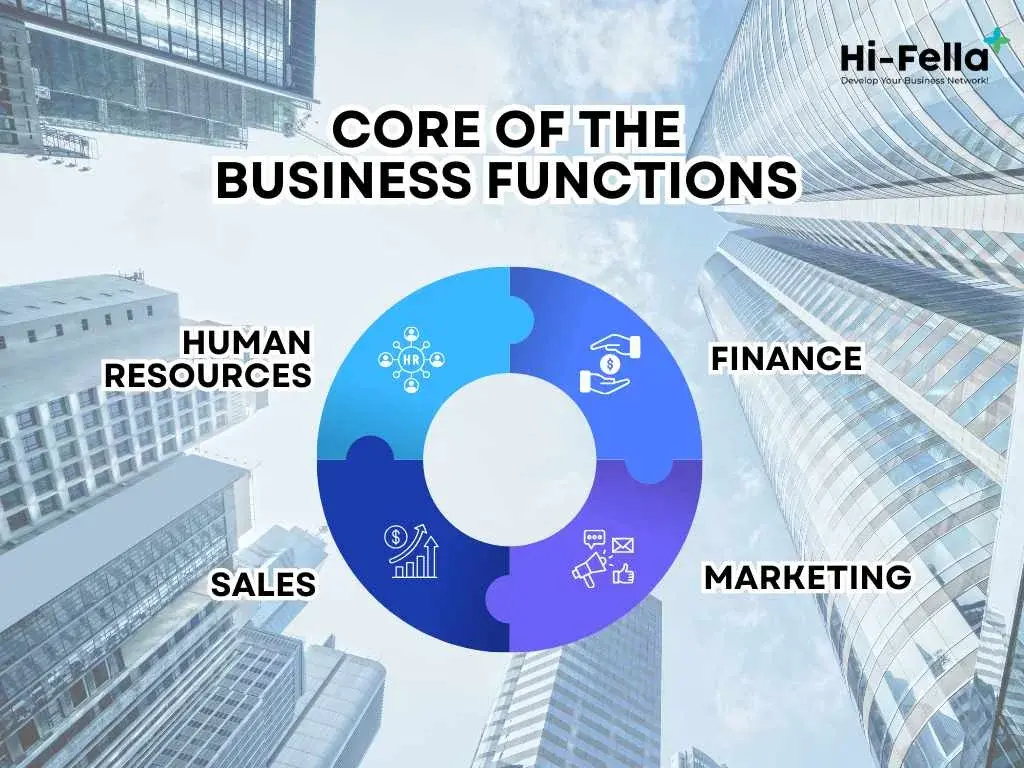Table of Contents
If you want to understand the key activities in a business model, including business core functions and a comprehensive explanation of the business process, you’ve come to the right place!
In this article, we will provide comprehensive information about business, especially the fundamentals of business that can help you start a business or want to develop your business in the long term period. So, let’s dive into it!
What are Activities in a Business?

Source: Pexels
Business is an activity or business which is carried out by an individual or business entity with the aim of making a profit.
Activities in a business revolve around the processes of production and distribution, ultimately reaching the hands of consumers. Several characteristics define business, including:
- Related to Goods or Services to Fulfill Human Needs
Business is associated with providing products or services that meet human needs.
- Generates Market Needs and Demands
It creates market needs and demands by offering valuable goods or services.
- Conducted by Individuals, Groups, Organizations, Institutions
Business can be carried out by individuals, groups, organizations, institutions, or any entity engaged in economic activities.
- The Goal of Business is Profit
The primary objective of any business is to make a profit from its operations.
- Contributes to the Welfare of Society
Businesses play a role in contributing to the overall well-being of society by meeting various needs.
- Involves the Risk of Loss
Engaging in business activities comes with the inherent risk of potential financial loss.
- Related to Production, Distribution, and Consumption Activities
Business is connected with the activities of producing, distributing, and consuming goods and services.
Understanding these characteristics is essential for you to comprehend the fundamental aspects of business and its role in shaping economic activities.
Why Activities in a Business are Important?
Activities in a business hold importance as they enable companies to generate income, earn profits, and expand. Additionally, they play a crucial role in fulfilling the needs of both customers and stakeholders.
Key Activities in a Business Model

Source: Pexels
Essentially, the question “What are the key activities in the business model?” encourages exploration of the fundamental tasks that contribute to the overall functioning of the business.
There are three main types of activities in a business: operating, investing, and financing. These activities involve how a company handles its money. The cash flow statement is like a report that shows where the money is coming from and where it’s going.
1. Operational Business Activities
This section discusses the money the company earns and spends from day-to-day operations. It includes adding back things that are not cash, such as depreciation.
It also looks at changes to things like receivables and payables, although it doesn’t involve money coming in and going out.
2. Investing Business Activities
Here, we look at things the company does that will last more than one year. Buying or selling long-term assets, such as real estate, is part of this. It also includes spending money on big things for the future, called “capital expenditures.”
3. Funding Business Activities
This section is about how companies get money. It includes things like going public, borrowing money, or paying dividends to shareholders. Anything related to raising or spending money is in this section.
The cash flow statement helps investors understand how the company manages its money, showing a clear picture of cash-related activities.
Core Business Functions

Core business functions involve five essential areas that are critical to the success of any business. These functions, including human resources, finance, marketing, and sales, are necessary complements to the core functions.
1. Human Resources
The main tasks of a human resources (HR) department involve hiring and finding the right people, training them, managing their compensation and benefits, handling employee relations, ensuring legal compliance, and maintaining the company’s image.
According to Indeed, typical HR roles include managing records, assisting with HR tasks, overseeing compensation and benefits, leading recruitment efforts, and being in charge as HR directors.
2. Finance
The responsibilities of the finance and accounting functions revolve around managing company finances, covering aspects like budgeting, funding, supervision, control, and financial reporting for both internal and external users.
Additionally, the team handles diverse financial transactions within the company, ranging from paying suppliers and employee salaries to managing taxes and collecting payments from customers.
Moreover, the finance and accounting departments engage in managerial accounting, focusing on supplying management with financial information. This involves presenting not only financial figures but also consolidated operational data.
3. Marketing
According to Investopedia, the field of marketing encompasses all the activities a company engages in to attract customers and nurture ongoing relationships with them.
Building connections with potential or previous clients is also a crucial aspect of this work, involving tasks like sending appreciation emails, engaging in activities such as golf with potential clients, promptly responding to calls and emails, and arranging meetings over coffee or meals.
In its fundamental essence, marketing aims to align a company’s products and services with customers who have an interest in accessing those offerings. The ultimate goal is to ensure profitability by successfully connecting products with customers’ needs and preferences.
4. Sales
According to HubSpot, a salesperson proactively connects with prospective customers who have shown interest in their offerings, often by visiting the company’s website or engaging on social media.
The ultimate goal is to engage with prospects who have expressed interest or align with the characteristics of the company’s target customers. The goal is to offer customized solutions that suit their needs, ultimately culminating in the purchase of the company’s products or services.
While many sales teams operate under monthly quotas and performance benchmarks to convert leads and close deals, the primary focus of sales is more than just deals. The ultimate goal centers on solving problems for customers, ensuring their needs are met through the products or services offered.
Understanding Business Processes

Source: Pexels
Basically, a business process refers to a set of repeatable steps that a company follows to achieve a specific objective. Effective processes play a vital role in advancing towards your goals and enhancing the overall operations of your business.
The primary aim of a business process is to guide your company towards a particular target. When you aim to achieve objectives as a business entity, well-designed processes enable you to take consistent and repeatable steps forward.
An effective process is characterized by three key elements:
- Repeatability
Every process must be crafted with the intention of being repeated. A process that is not meant to be replicated becomes more of an action plan rather than a genuine process. It’s akin to the distinction between routine purchases and the strategic acquisition of a new facility.
- Transparency
Processes should be traceable, allowing for ongoing monitoring and evaluation of their success. A sound process incorporates built-in data-tracking steps, enabling you to analyze performance and efficacy over time. - Agility
A well-designed process must be adaptable to diverse situations, ensuring that minor changes in the work environment do not lead to unnecessary delays. Moreover, an effective process should be easily modifiable in the event of significant or permanent adjustments.
Example of Business Process
Understanding business processes or activities in a business involves categorizing them into key types crucial for company development, such as:
1. Operational Processes
- Product Development
Identifying opportunities, brainstorming solutions, testing, and releasing versions for continuous improvement. - Manufacturing
Sourcing, transforming materials, and packing for delivery, emphasizing Lean methodology for operational efficiency. - Delivery
Tailored to business structure, optimizing efficiency and reducing waste.
2. Sales Processes
- Sales
Lead generation, qualification, negotiation, and nurturing customers for increased sales. - Marketing
Building brand trust and loyalty through various advertising types. - Customer Service
Providing excellent service to encourage repeat business and ensure satisfaction.
3. Supporting Processes
- Accounting
Managing assets, debts, and staying compliant through detailed record-keeping. - Maintenance
Essential for preventing future expenses, including routine cleaning and equipment upkeep.
Conclusion
Gaining an understanding of the key activities in a business, functions, and processes will help you succeed.
These key activities, ranging from product development and marketing to sales and customer service, are the critical functions that drive a company to achieve its goals.
Recognizing the importance of repeatability, transparency, and agility in these processes is critical to ensuring adaptability and long-term prosperity.
By understanding these elements, companies can strategically align their operations, efficiently allocate resources, and navigate the ever-evolving market landscape.








